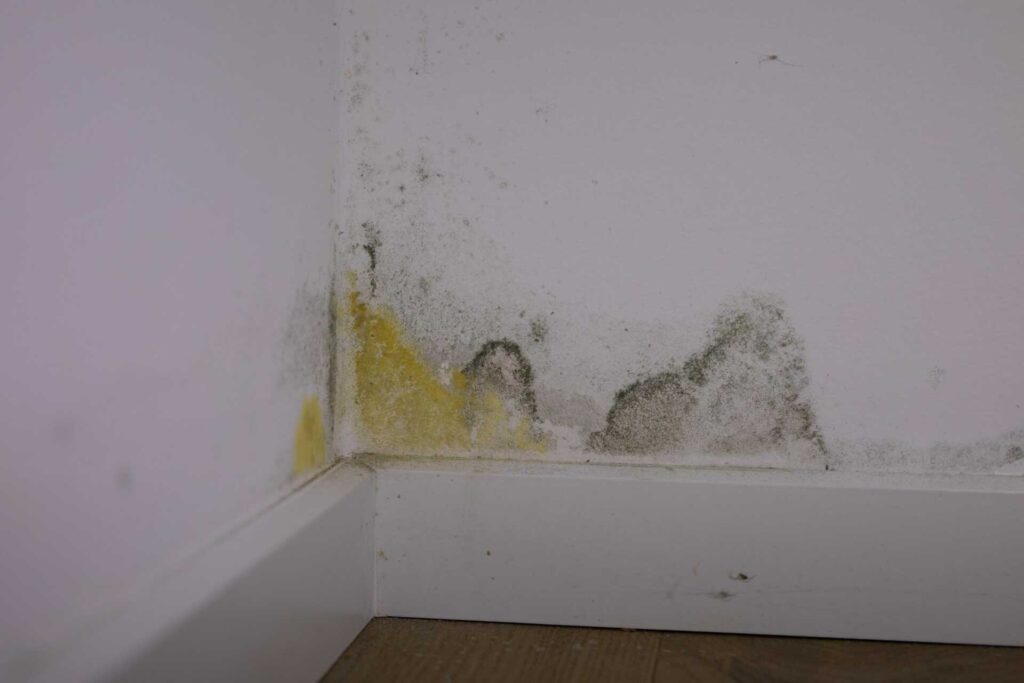Isn’t it unsettling to think about how quickly mold can take over your home? You might not realize that effective mold remediation techniques can save your living space and health. First, you need to identify and assess the extent of the mold issue, then move on to containment and removal, ensuring no spores spread further. But what comes next is crucial for preventing future outbreaks. Understanding the intricacies of these methods could be the key to maintaining a mold-free environment, so let’s explore the details that can make all the difference.
Key Takeaways
- Containment: Establish a containment zone using plastic sheeting to prevent mold spores from spreading during the remediation process.
- Removal of Affected Materials: Safely remove unsalvageable materials like drywall and carpeting to eliminate mold growth sources.
- Surface Cleaning: Clean non-porous surfaces thoroughly with water, detergent, or mold remover, ensuring they are rinsed and dried completely.
- Fungicidal Treatment: Apply fungicidal agents to treated surfaces as necessary, following the manufacturer’s instructions for effective mold elimination.
- Regular Inspections: Conduct regular inspections and maintain cleanliness to prevent future mold growth and identify potential moisture issues early.
Identify and Assess Mold
Identifying and assessing mold is crucial for effective remediation. When you suspect mold in your environment, the first step is to recognize the various mold types that may be present. Common mold types include Aspergillus, Cladosporium, and Stachybotrys, each exhibiting distinctive characteristics and potential health effects. By understanding these molds, you can better evaluate the situation.
Next, it’s vital to conduct a thorough inspection of your space. Look for visible signs of mold, such as discoloration on walls or ceilings, and check damp areas like bathrooms, kitchens, and basements. Remember, mold thrives in moist environments, so identifying sources of moisture is key. Use a moisture meter if necessary to detect hidden dampness behind walls or beneath flooring.
Once you’ve identified potential mold growth, assess the extent of the problem. Consider the size of the affected area and whether it poses a risk to your health.
Mold exposure can lead to a range of health effects, including respiratory issues, allergic reactions, and even toxic reactions in sensitive individuals. If you or someone in your household has pre-existing health conditions, it’s crucial to take these risks seriously.
Containment and Removal
To effectively manage mold issues, containment and removal are essential steps that ensure spores don’t spread to uncontaminated areas.
First, you should establish a containment zone around the affected area. Use plastic sheeting to cover doors, windows, and vents, creating a barrier that limits airflow. This prevents mold spores from migrating to other spaces in your home or building.
Next, implement air filtration systems equipped with HEPA filters. These filters capture airborne spores and significantly improve indoor air quality during the remediation process. You’ll want to run these air filtration units continuously to ensure the environment remains as clean as possible.
Once containment is in place, focus on surface cleaning. Start by removing moldy materials, such as drywall or carpeting that can’t be salvaged.
For non-porous surfaces, use a mixture of water and detergent or a specialized mold remover. Scrub the surfaces thoroughly, and don’t forget to rinse and dry them afterward to eliminate any residual moisture.
After removing visible mold, it’s crucial to ensure that any spores left behind are effectively neutralized. This may involve treating surfaces with a fungicidal agent or biocide, following the manufacturer’s instructions.
Prevention and Maintenance
While mold remediation is critical for addressing existing mold problems, prevention, and maintenance play an equally important role in safeguarding your space from future infestations. Implementing effective mold-proofing strategies can significantly reduce the likelihood of mold growth. Start by controlling humidity levels, as mold thrives in damp environments. Ideally, keep humidity below 50% by using dehumidifiers and ensuring proper ventilation.
Here’s a quick reference table to help you implement these strategies effectively:
| Mold Proofing Strategies | Actions to Take |
|---|---|
| Humidity Control | Use dehumidifiers, fix leaks |
| Ventilation | Open windows and use exhaust fans |
| Regular Inspections | Check for leaks and water damage |
| Cleanliness | Regularly clean and dry areas prone to moisture |
| Insulation | Insulate pipes, attics, and basements |
Incorporating these practices into your routine can create an environment that’s less conducive to mold growth. It’s essential to regularly inspect your home, especially in areas like basements, bathrooms, and kitchens. By maintaining cleanliness and ensuring proper airflow, you’ll prevent mold and promote a healthier living space for you and your loved ones. Remember, taking proactive steps to control humidity and maintain your home will foster a sense of security and belonging, ensuring you can enjoy your space without the worry of mold issues.
Recap
Effective mold remediation hinges on identifying and assessing the issue, containing and removing affected materials, and implementing preventive measures. For instance, imagine a family discovering mold in their basement after a flood. By promptly removing contaminated drywall, cleaning surfaces, and applying fungicidal treatments, they restore their home and safeguard against future infestations. By following these techniques, you can ensure a healthier living environment and minimize the risk of mold recurrence.

